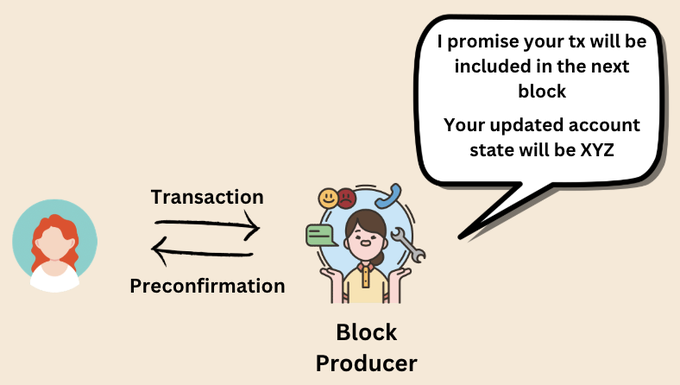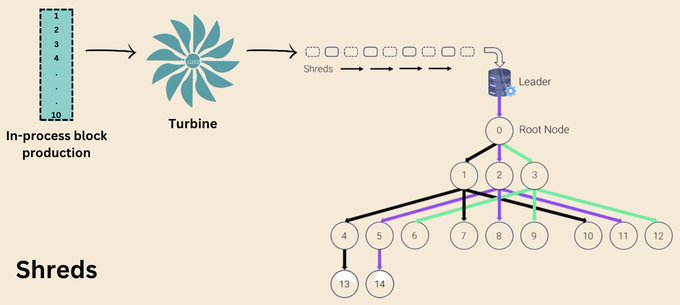Comparison of Base, MegaETH and Solana pre-confirmation mechanisms: How to weigh speed and safety?

Reprinted from panewslab
03/20/2025·2MAuthor: Shiva
Compiled: Tim, PANews
The pre-confirmation mechanisms of Base, MegaETH and Solana are: Flashblocks, Miniblocks and Shreds.
Who is the quickest?
Who is the safest?
Who will win?
Here's everything you need to know:

TLDR:
- Flashblocks, miniblocks and shreds are the "pre-confirmation" mechanisms on the Base, MegaETH, and Solana chains respectively.
- The pre-confirmation mechanism provides the user with "inclusion guarantee", that is, the transaction will be included in the next block
- The pre-confirmation mechanism can improve the user experience, but users need to temporarily believe that the block producer is honest and reliable.

Base Flashblocks
The current block confirmation time on Base is 2 seconds.
Every 2 seconds, all tools such as block browser, RPC, wallet, etc. will get the status updates of blocks and databases and share them with users.
The above state update lacks "final confirmation" (immutable), but the sorter has done "pre-confirmation".
The 2-second update delay does not provide a good user experience because users are used to higher speeds.
Flashblocks directly solves this user experience problem by reducing the pre-confirmation time to 200 milliseconds:
- The sorter runs in a trusted execution environment (TEE) and sorts transactions based on priority fees.
- Every 200 milliseconds, the sorter creates a sub-block (Flashblock) and broadcasts it to the L2 node.
- The L2 nodes verify the TEE signature and issue a pre-confirmation to the user, and they also apply Flashblocks to the local state.
- After 2 seconds, the sorter compiles a complete block and generates a Merkel digest for submission to L1.
- Once L1 is finally confirmed, L2 nodes will update their hard state to complete the final confirmation of the block.
Although the confirmation of the entire block still takes 2 seconds, users can see the updated status within 200 milliseconds, which significantly improves the user experience.

MegaETH Miniblocks
MegaETH currently plans to set the block time to 1 second.
However, they will adopt a pre-confirmation mechanism similar to Flashblocks to improve the user experience.
The MegaETH sorter will output transactions when building blocks (in any order of transactions).
MegaETH plans to perform pre-confirmation every 10 milliseconds, and they call this form “Miniblocks.”
Similar to Flashblocks, Miniblocks can significantly improve the user experience without increasing trust in the 1-second block.
(It should be noted that when using Flashblocks, users also need to trust TEE (Trustful Execution Environment) to correctly run priority sorting.)

Solana Shreds
Solana is a pioneer in blockchain with good user experience and high-speed transactions.
Solana's normal block time is 400 milliseconds.
However, during block generation, Solana's block makers divide the blocks into smaller parts, called "Shreds", and submit them to Proof of History (PoH), which then propagate these Shreds to other parts of the network.
Other validators can start copying the transaction once they receive the Shreds and send the transaction immediately after verifying the Shreds (less than 400 milliseconds).

Now two problems arise:
- How safe are these "pre-confirmations" in each case?
- What exactly does "block time" mean for a rollup when the transaction is finally confirmed when it is batch processed and sent to L1?
Pre-confirmed security
a) Solana
Suppose a Solana verifier receives 2 Shreds from the block maker, but these Shreds do not become part of the final block. This can be caused by two reasons:
- Block maker offline: No final block is generated, the slot is skipped. In this case, the next block maker will take over these Shreds and include them in their own block (copying on the longest fork).
- Malicious behavior of block makers: block makers spread different Shreds to different validators, intending to split the network.
Therefore, the inclusion guarantee is simply to believe that the block makers are not malicious or corrupt.
b) MegaETH
There is only one sorter. Therefore, the inclusion guarantee is believed to be non-malicious.
The other two risks are:
i) Sorter offline: In this case, when it re-on, it will contain pre-confirmed transactions.
ii) Reorganization occurs on Ethereum L1: Any unfinalized L2 transactions will be copied by the sorter on the new fork.
c) Base
Similar inclusion guarantees to MegaETH.
The inclusion guarantee here is that the sorter is believed to be non-malicious and that the TEE (Trustable Execution Environment) is secure.
However, even if TEE is hacked, the only thing that can be changed is the priority order of transactions.
In all cases, users can get faster pre-confirmation, but the risk is that there may be corruption among block makers.
Since the block makers of a single block have monopoly on the construction of the block at any given time, it is reasonable to assume that corruption has the same probability in each block construction.
What does the block time of L2 mean?
The L1 blockchain has a consensus mechanism, while most L2 blockchains do not.
In the L1 public chain, fixed block time can improve consensus efficiency because the voting behavior of the validator is concentrated on the key time nodes of block generation. Verifiers will vote to confirm the correctness of all transactions within the entire block.
Does the block time of L2 make sense?
The answer is yes.
Although the block time of L2 is freely set and represents only "pre-confirmation" rather than final certainty, fixed block time still has the following key values:
- When implementing a fee mechanism similar to EIP1559, operating at the block level will significantly improve execution efficiency compared to frequent sub-block/flashblock levels.
- If L2 plans to implement a decentralized sorting and verification process, setting clear block boundaries can significantly improve efficiency, because voting and verification behaviors can be centrally completed within a specific time window.
With the improvement of blockchain performance, faster sub-second pre-confirmation will become the norm.
The ultimate winning main chain will also ensure that the probability of corruption is effectively resisted.

